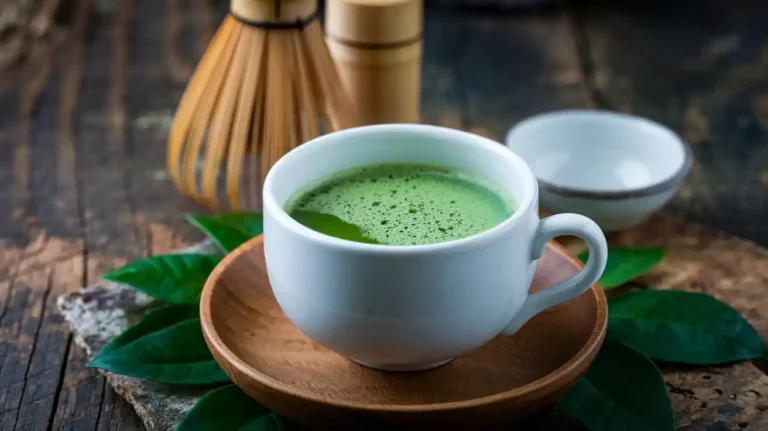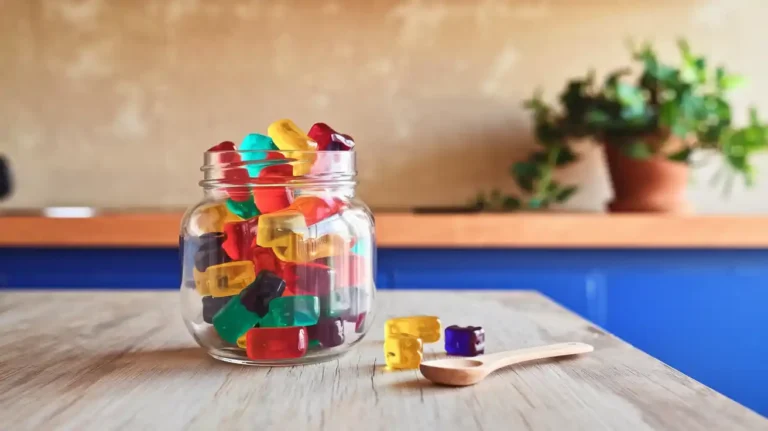The Complete Green Tea Matcha Guide: Everything You Need to Know
Have you ever imagined how matcha ended up reaching global levels?
For years as passionate tea enthusiasts, we would research and spend much time traveling into this green juice’s mystic world. Today, we get to share all we’ve learned about this magical green tea powder that is storming the wellness world.
Let’s jump into the detailed guide that is going to take you from beginner to matcha expert. Whether one is looking out for health matcha benefits, in this complete green tea matcha guide you’ll learn how to prepare matcha or just reviewing what are the best matcha powder brands for you, this is the right place.
History and Origin of Green Tea Matcha
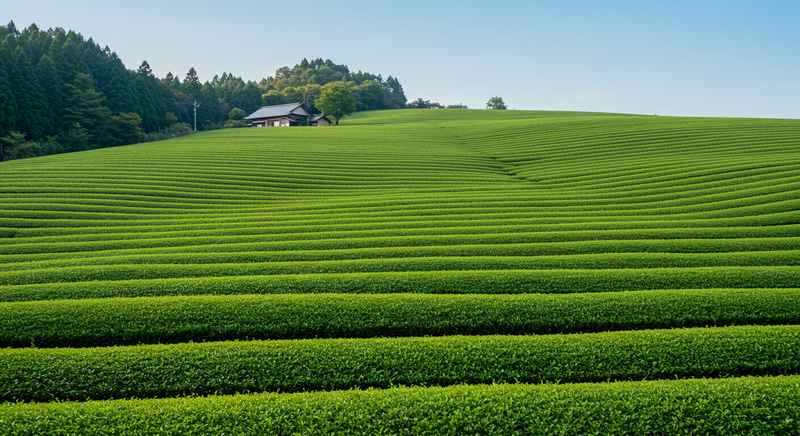
Green tea matcha’s narrative is rich, sophisticated, and quite fulfilling, much as a well made cup would be. Though its roots go back even earlier to ancient China, this vivid green powder has been a staple of Japanese life for more than 800 years.
Historical Roots in Japan
You might be surprised to learn that we owe matcha’s development to Buddhist monks! In the 12th century, Japanese monk Eisai brought tea seeds from China, along with the innovative method of grinding tea leaves into a fine powder.
The monks discovered that drinking matcha helped them maintain alertness during long meditation sessions – talk about an ancient biohack!
The way green tea matcha developed in Japan makes it quite special. The Japanese improved the methods of growing and processing to produce the unique brilliant green powder used today.
Growing tea plants under shade cloths became a habit that enhances chlorophyll content and produces that unique smooth, umami taste we will discuss later.
Over time, Japanese matcha tea transcended its religious origins. For samurai warriors and nobility, it had evolved into a status symbol by the 14th century. They weren’t just drinking it for the taste – they valued its ability to promote both alertness and calm, perfect for their demanding lifestyle (sounds familiar to our modern needs, doesn’t it?).
Japanese Tea Ceremony

From a basic drink to an art form, the Japanese tea ceremony, or chanoyu, elevated matcha. This elaborate ritual represents four essential principles: harmony (wa), respect (kei), purity (sei), and tranquility (jaku).
These principles apply not only to the ceremony, but to all aspects of matcha production and use.
I remember my first authentic tea ceremony in Kyoto – the deliberate movements, the peaceful atmosphere, and the profound respect for every element of the process completely changed my perspective on tea drinking.
It wasn’t just about the matcha anymore; it was about creating a moment of mindfulness in our chaotic world. The traditional ceremony is a choreographed art that can last up to four hours (though modern versions are usually shorter).
Every movement has meaning, from the way the tea bowl is turned to how the chasen (bamboo whisk) is used to create the perfect froth.
What are the Green Tea Matcha Health Benefits?
What makes matcha tea so special from a scientific standpoint? Unlike regular green tea, matcha contains the entire tea leaf, providing a concentrated source of beneficial compounds.
Chemical Composition
Let’s take a closer look at what makes green tea matcha so special on a molecular level. Its unique chemical composition is the secret behind its remarkable health benefits and vibrant energy boost.
Here’s what you’re getting in each serving:
- Catechins (particularly EGCG)
- L-theanine
- Chlorophyll
- Fiber
- Vitamins (A, C, E, K)
- Minerals (including potassium, calcium, and iron)
The real magic happens when these compounds work together. L-theanine and caffeine create what I like to call the “matcha zen” – focused energy without the jitters.
According to a 2021 study published in the Journal of Functional Foods, matcha contains up to 137 times more EGCG than regular green tea [source: Journal of Functional Foods, Vol. 78].
Proven Health Benefits of Matcha
Let’s explore the proven health benefits that make this green tea matcha powder a powerhouse for mind and body.
Immune System: Studies have indicated that the great antioxidant value of matcha supports immune system activity. One cup of matcha contains as many antioxidants as 10 cups of regular green tea! These antioxidants, particularly catechins, help fight inflammation and protect cells from damage.
Mental Health: Remember that “matcha zen” I mentioned? It’s not just anecdotal. The unique combination of L-theanine and caffeine has been shown to:
- Improve attention and reaction time
- Reduce stress and anxiety
- Enhance mood and cognitive performance
Metabolism and Weight Loss: If you’re into biohacking, you’ll love this: green tea matcha has been shown to boost metabolism and increase fat oxidation. Matcha before exercise raised fat burning by up to 17%, according a study published in the American Journal of Clinical Nutrition.
Cardiovascular Functions: Regular matcha consumption has been linked to lower blood pressure, reduced LDL cholesterol, improved arterial health.
Caffeine and Performance
One of the most common questions I get is about caffeine content.
A typical serving of matcha (1-2 grams) contains 38-88 mg of caffeine – roughly half the amount in a cup of coffee. But here’s where it gets interesting…
Unlike coffee’s quick hit, green tea matcha’s energy boost is smooth and sustained, typically lasting 4-6 hours. This is due to the synergistic effect between caffeine and L-theanine, creating what scientists call “calm alertness.” I often describe it to my clients as “having a meditation cushion under your productivity rocket.”
Comparative Analysis of Green Tea Matcha
Time to finally crack the code on this debate! Having experimented with both matcha and coffee for years, we can tell you this analogy goes beyond mere caffeine level.
Green Tea Matcha vs Coffee
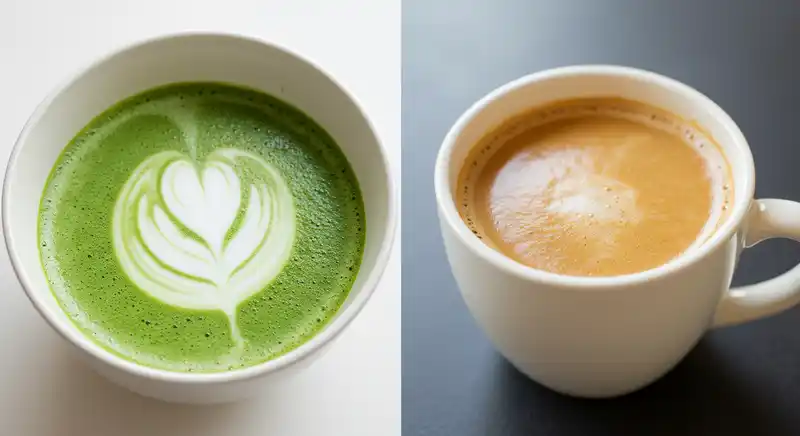
While both beverages offer unique benefits, green tea matcha provides a more comprehensive package of health-promoting compounds. Here’s how they stack up:
Matcha:
- Rich in L-theanine for focused calm
- High in antioxidants (EGCG)
- Contains chlorophyll and fiber
- Supports immune function
Coffee:
- Higher caffeine content
- Rich in different antioxidants
- May increase acid reflux
- Can cause jitters and crashes
Here’s something interesting we’ve noticed both personally and through client feedback: while coffee gives you that immediate “I can conquer the world” feeling, matcha provides what I call the “sustainable superpower” effect.
The energy difference feels like this:
- Coffee: 0 to 100 real quick, then crash and burn
- Matcha: Gentle lift-off, steady cruise, smooth landing
Matcha vs Green Tea
The primary distinction is in how these teas are cultivated and made. Consider this: if green tea is like cooking with fresh herbs, matcha is like eating an entire herb garden!
Processing steps:
- Green Tea: Leaves are steeped and discarded
- Matcha: Entire leaves are ground and consumed
Comparative Benefits
The numbers don’t lie:
- Antioxidants: Matcha contains 137x more than regular green tea
- Caffeine: 88mg in matcha vs 35mg in green tea
- L-theanine: 46mg in matcha vs 8mg in green tea
Green Tea Matcha vs Other Teas
Having tested various teas in our wellness journey, we can tell you that matcha stands out dramatically.
The NLM library has provided a study from the University of Colorado revealing that green tea matcha contains up to three times more antioxidants than high-grade teas.
Common Tea ORAC values (antioxidant levels):
- Matcha: 1384 units/g
- White Tea: 4245 units/g
- Black Tea: 1128 units/g
Preparation Methods
Different teas require different preparation methods, and this affects their nutritional delivery:
- Black Tea: Boiling water, steep 3-5 minutes
- Green Tea: 175°F water, steep 2-3 minutes
- Matcha: 175°F water, whisked into suspension
Practical Buying Guide for Green Tea Matcha
We’ve made every matcha-buying mistake possible so you don’t have to! The key to great matcha starts with selecting the right grade for your intended use.
Ceremonial Grade Matcha:
- Vibrant green color
- Smooth, sweet taste
- Perfect for traditional preparation
- Price range: $25-75 per 30g
Premium Grade:
- Bright green color
- Slightly less refined taste
- Great for daily drinking
- Price range: $15-30 per 30g
Culinary Grade:
- Less vibrant color
- Stronger, slightly bitter taste
- Ideal for cooking/baking
- Price range: $10-20 per 30g
Evaluation Criteria
When helping our friends choose green tea matcha, we tell them to look for these indicators:
- Color: Should be vibrant jade green (avoid dull or yellowish hues)
- Origin: Preferably from Japan (particularly Uji or Nishio)
- Texture: Should be extremely fine and silky
- Packaging: Light-proof and airtight containers
- Price: If it seems too good to be true, it probably is
Best Matcha Powder Brands
Through years of testing and research, we’ve found several consistently reliable brands. The best matcha powder maintain strict quality control and traditional processing methods.
If you’re curious to see which ones made the cut, check out our ultimate matcha buying guide for a detailed breakdown of the top picks!
🏆 Best Overall: Ippodo Tea Ummon – A top choice for matcha aficionados seeking unmatched quality.
🌱 Best Value: Naoki Matcha Superior – Ideal for beginners exploring premium matcha.
☕ Best Daily Drinker: Hanaka Kettl – Perfect for kickstarting your mornings.
🥛 Best for Lattes: Golde Pure Matcha – Creates dreamy, creamy latte perfection.
📸 Best Packaging: Rocky’s Matcha – A delight for both taste buds and the eyes.
🆕 Best for Beginners: Chamberlain Coffee Original – Accessible and premium combined.
♻️ Best Sustainable: Matchaful Hikari – Where eco-conscious meets excellence.
🏪 Best Café Style: Blue Bottle Craft – Bring café-quality matcha to your kitchen.
💰 Best Budget: Rishi Tea – Affordable without compromising quality.
🔄 Most Versatile: Encha Ceremonial – Great for drinking, baking, or lattes.
☕ Best for Lattes: Jade Leaf – Milk’s perfect matcha partner.
🎯 Premium Choice: Shirakawa Samidori – Crafted for true connoisseurs.
📦 Best Bulk Buy: CAP Beauty The Big Matcha – For the serious matcha devotee.
🌿 Best Sustainable Premium: Matchaful Kiwami – The epitome of eco-luxury.
✈️ Best for Travel: Aiya Matcha to Go – Convenience that doesn’t compromise on quality.
The growing organic matcha market offers many options, but to ensure quality, prioritize products with USDA or JAS organic certification, sustainable farming practices, and, when possible, fair trade certification.
Essential Accessories
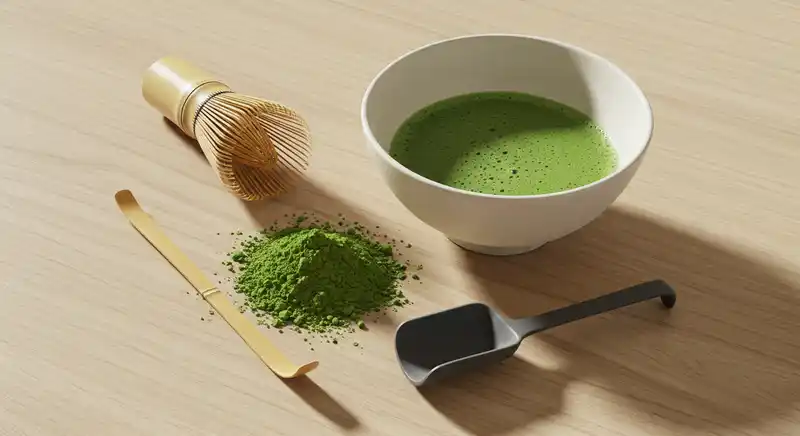
Want the full matcha experience? Here’s your essential toolkit:
Chasen (Bamboo Whisk)
- 80-100 prongs for optimal frothing
- Handmade from a single piece of bamboo
- Price range: $20-45
Chawan (Tea Bowl)
- Wide diameter for proper whisking
- Ceramic construction
- Price range: $25-100+
Chashaku (Bamboo Scoop)
- Traditional measuring tool
- Perfect for 1.5-2g portions
- Price range: $10-20
Modern Equipment
Not everyone needs the traditional setup. Here are our recommended modern alternatives:
Electric Frother
- Perfect for busy mornings
- More consistent results
- Price range: $15-30
Modern Vessels
- Double-walled glass bowls
- Insulated tumblers
- Temperature-maintaining mugs
Complete Preparation Guide for Green Tea Matcha
After years of practice (and plenty of failed attempts!), I can tell you that preparing green tea matcha traditionally is both an art and a meditation. The traditional Japanese method isn’t just about making tea – it’s about creating a moment of mindfulness in your day.
The Japanese Technique
Mastering the art of traditional Japanese matcha preparation is all about precision and care, from selecting the right temperature to creating the perfect frothy texture.
Here the preparation steps:
- Sift 1.5-2g matcha into your bowl
- Add 2oz (60ml) water at 175°F (80°C)
- Begin with a small amount of water to create a paste
- Add remaining water gradually
Key Temperature Points:
- Too hot (>185°F): Creates bitterness
- Too cold (<160°F): Reduces flavor extraction
- Perfect (175°F): Brings out umami notes
The chasen is your secret weapon for perfect matcha. Here’s my tried-and-true whisking technique:
Initial Paste Creation:
- Use quick, gentle strokes to remove clumps
- Create a smooth paste before adding more water
Main Whisking:
- Use a fast “W” motion
- Keep wrist loose but controlled
- Aim for 10-15 seconds of vigorous whisking
Modern Matcha Recipes
Let’s get creative! These modern matcha recipes keep the tea’s benefits intact while adding delicious twists:
Iced Matcha Latte Recipe
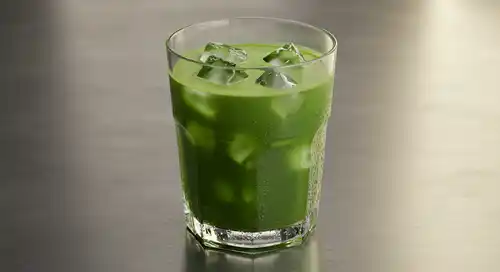
- 1.5g ceremonial grade matcha
- 1oz hot water for initial mixing
- 6oz cold milk of choice
- Ice cubes
- Optional: 1 tsp honey or maple syrup
Matcha Smoothie Recipe
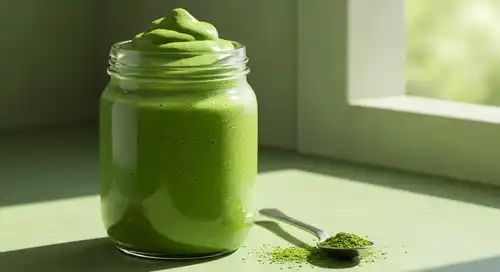
- 1g culinary grade matcha
- 1 frozen banana
- 1 cup spinach
- 1 cup almond milk
- 1 tbsp chia seeds
- Optional: protein powder
Hot Matcha Latte Recipe
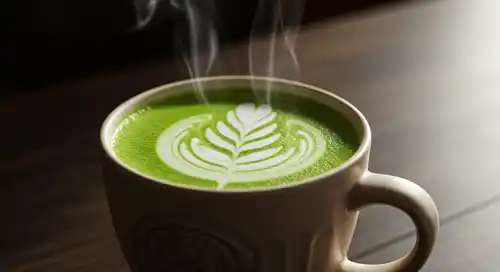
- 1.5g ceremonial grade matcha
- 2oz hot water for mixing
- 6oz steamed milk of choice
- Optional: a dash of vanilla extract and 1 tsp sweetener
- Whisk until frothy and enjoy the warm, creamy goodness.
Culinary Uses
Matcha is also a versatile ingredient that can enhance a wide range of cuisines.
es. Some of my favorite ways to use matcha in the kitchen include baked goods like cookies, pound cake, and energy balls. It’s also perfect for breakfast, adding a vibrant twist to oatmeal, chia pudding, and even pancakes.
Matcha is perfect for boosting your snacks or starting your day with a green superfood!
Common Mistakes to Avoid
Trust me, I learned these lessons the hard way! Proper storage is crucial for maintaining matcha’s delicate flavor profile and nutritional benefits.
Common Storage Mistakes:
- Exposure to light
- Heat exposure
- Air exposure
- Moisture contamination
Best Storage Practices:
- Keep in airtight container
- Store in cool, dark place
- Use within 2 months of opening
- Never store in refrigerator
Avoid these common preparation pitfalls:
Temperature Issues:
- Using boiling water
- Not pre-warming bowl
- Inconsistent water temperature
Technique Mistakes:
- Incorrect whisking motion
- Not sifting powder
- Wrong powder-to-water ratio
Conclusion

Hurray! You now have everything you need to start or elevate your matcha journey. Remember that, just like with any good activity, it takes time and patience to get good at matcha.
The objective is to begin with quality ingredients, use the appropriate techniques, and, above all, have fun with it.
Whether you are into the health benefits, the strong energy, or just the delight of a perfectly made bowl of matcha, you become part of a centuries-old tradition that keeps on bettering people’s lives to this very day.



